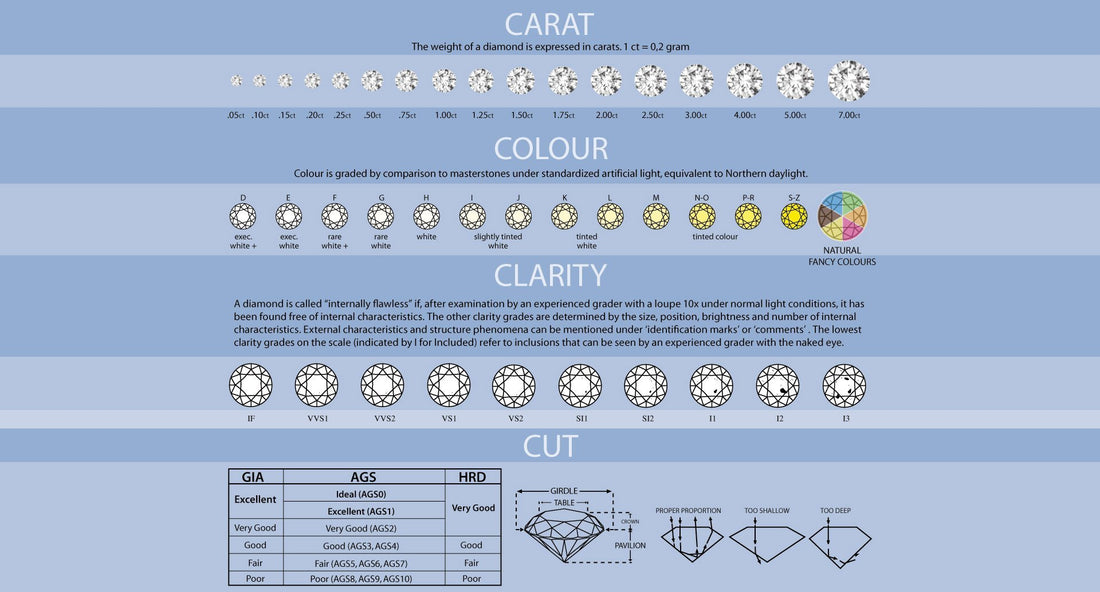Each diamond has its own individual characteristics that will determine the value. These are known as the 4C’s. Diamonds with the most perfect combination of the 4C’s are the rarest and therefore the most valuable.
Cut
Cut is the only diamond characteristic directly influenced by man: the other three are dictated by nature. A good round brilliant cut releases the life, fire and sparkle of a diamond through the arrangement and proportions of its 57 or 58 facets (tiny planes that create angles to reflect light). When a diamond is cut to good proportions, light will reflect from one facet to another and disperse through the top of the stone, resulting in a display of brilliance and fire. Diamonds that are cut too deep or too shallow lose light that spills through the side or bottom.
The shape (cut) of a diamond is a matter of personal taste; the round brilliant cut is the most popular. Other popular shapes are Pear, Princess, Heart, Oval, Emerald, Marquise, Asscher and Radiant cut.

Old cut diamonds
Old cut diamonds generally used in Art Deco and Vintage jewellery are a form of brilliant cut, with a variety and similar number of facets to the brilliant cut. All hand cut without the use of precise machine work, each one is as individual as the people who cut them. Key features include an open culet and a small table. Often they have an open culet where the facets come together at the bottom and leave a small flat surface.
https://friarhouse.com/collections/art-deco-jewellery-1
https://friarhouse.com/collections/vintage-circa-1941
Colour
While most diamonds appear white, many of them display hints of colour barely discernible to the naked eye. The closer a diamond approaches colourless, the more rare and the valuable the stone.
Diamonds with a strong pure natural colour are extremely rare and are called "Fancies" amongst them are Pink, Blue, Yellow, Green, Cognac, and Orange.

Clarity
A diamond’s clarity is determined by the degree to which it is free from naturally occurring inclusions, often called ‘Natures Fingerprints’.
The number type, colour, size and position of the internal birthmarks can affect a diamond’s value. However, many are invisible to the naked eye requiring magnification under a standard 10x magnification loupe before they become apparent, the fewer inclusions, the rarer the stone.
Carat Weight
Carat refers to weight, and therefore the size of a diamond. One carat is divided into 100 points. Therefore, a diamond weighing 0.50pts is equal to half a carat. Size is the most obvious factor in determining the value of a diamond, however, two diamonds of equal size can have very different values, depending on their cut, clarity and colour.





